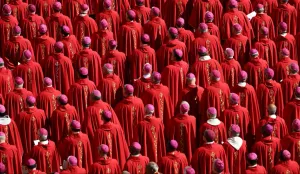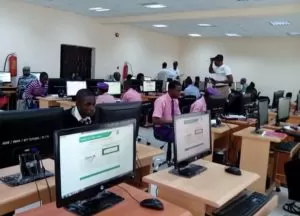Pope Francis Laid to Rest in Santa Maria Maggiore Basilica

ROME — On April 26, 2025, Pope Francis, the 266th pontiff of the Roman Catholic Church, was laid to rest in a simple tomb within the Basilica of Santa Maria Maggiore, marking a historic departure from centuries of Vatican tradition. The Argentine-born pope, who died on April 21, 2025, at the age of 88, became the first pope in over 100 years to be buried outside the Vatican, choosing the fifth-century basilica in Rome’s vibrant Esquilino neighborhood over the grottoes of St. Peter’s Basilica.
A Humble Farewell
The funeral rites for Pope Francis, born Jorge Mario Bergoglio, began with a solemn Mass in St. Peter’s Square, attended by an estimated 250,000 mourners, including heads of state, religious leaders, and pilgrims from across the globe. The Mass, celebrated by the dean of the College of Cardinals, was a poignant reflection of Francis’ legacy as “the people’s pope,” known for his humility, advocacy for the poor, and efforts to reform the Church.
Following the Mass, Francis’ plain wooden coffin, inscribed only with his papal name, “Franciscus,” was carried through the streets of Rome in an open-topped popemobile, allowing thousands of mourners to bid a final farewell. The procession wound its way from the Vatican to Santa Maria Maggiore, where the pope was laid to rest in a niche near the Paolina Chapel, close to the revered Salus Populi Romani icon of the Virgin Mary.
In accordance with his wishes, the burial was strikingly simple. Francis’ will, made public after his death, specified that he be buried “in the earth, simple, without particular decoration.” His tomb, a modest stone slab bearing only his name, reflects the humility that defined his 12-year papacy. The choice of Santa Maria Maggiore, one of Rome’s four papal basilicas, underscores his lifelong devotion to Mary, whom he often called the “Mother of the Church.”
A Break from Tradition
The decision to be buried in Santa Maria Maggiore breaks with a long-standing tradition of interring popes in St. Peter’s Basilica, where most of Francis’ predecessors, including St. John Paul II and Benedict XVI, were laid to rest. The last pope buried in Santa Maria Maggiore was Clement IX, who died in 1669. Seven other popes are also interred in the basilica, which houses significant relics, including fragments believed to be from Jesus’ crib.
Francis’ connection to Santa Maria Maggiore was deeply personal. As pope, he visited the basilica more than 100 times, often praying before the Salus Populi Romani icon, a Byzantine image of Mary and the Christ Child credited with protecting Rome. He made it a tradition to visit the icon before and after international trips, entrusting his journeys to Mary’s intercession. In his final years, despite frail health and reliance on a wheelchair, he continued these visits, demonstrating his unwavering devotion.
The basilica’s location in the multiethnic Esquilino neighborhood, far from the grandeur of the Vatican, also resonated with Francis’ pastoral identity. Known for shunning Vatican luxuries—such as choosing a modest apartment over the Apostolic Palace—Francis saw Santa Maria Maggiore as a fitting resting place, aligning with his call for a “poor Church for the poor.”
A Global Legacy
Pope Francis’ papacy, which began in 2013, was marked by bold reforms and a focus on inclusivity, environmental stewardship, and interfaith dialogue. His encyclicals, such as Laudato Si’ on climate change and Fratelli Tutti on social fraternity, earned him global admiration, even as his progressive stances on issues like migration and same-sex blessings sparked controversy among conservative Catholics.
His death prompted an outpouring of grief worldwide. In St. Peter’s Square, mourners from diverse backgrounds—nuns, families, and young people—clutched rosaries and wept as they watched the funeral Mass on large screens. In Buenos Aires, Argentina, where Francis served as archbishop before his election as pope, thousands gathered for memorial Masses, celebrating his roots as the first Latin American pontiff.
World leaders also paid tribute. U.S. President Joseph Biden, the second Catholic U.S. president, called Francis “a moral compass for our time,” while Italian Prime Minister Giorgia Meloni praised his “message of peace and humanity.” The Dalai Lama, who met Francis several times, expressed sorrow, noting their shared commitment to compassion and interreligious harmony.
A Basilica Steeped in History
Santa Maria Maggiore, one of Rome’s oldest and most venerated churches, was an apt choice for Francis’ final resting place. Founded in the fourth century after a miraculous snowfall, the basilica is renowned for its stunning mosaics, marble columns, and spiritual significance. Its designation as a papal basilica and its role as a pilgrimage site made it a fitting home for Francis’ tomb.
In the days following the burial, thousands of Romans and tourists flocked to Santa Maria Maggiore to pray at the pope’s tomb. The basilica’s clergy reported an unprecedented number of visitors, with many leaving flowers, candles, and handwritten notes of gratitude. “He was our pope, but he belonged to the world,” said Maria Rossi, a Roman schoolteacher who visited the tomb.





